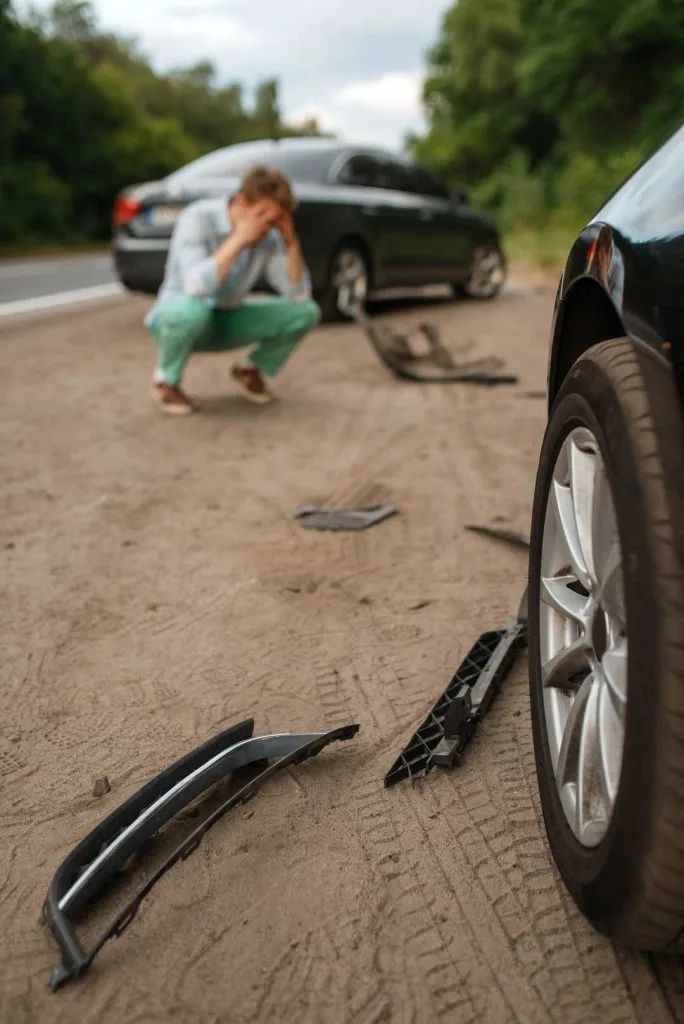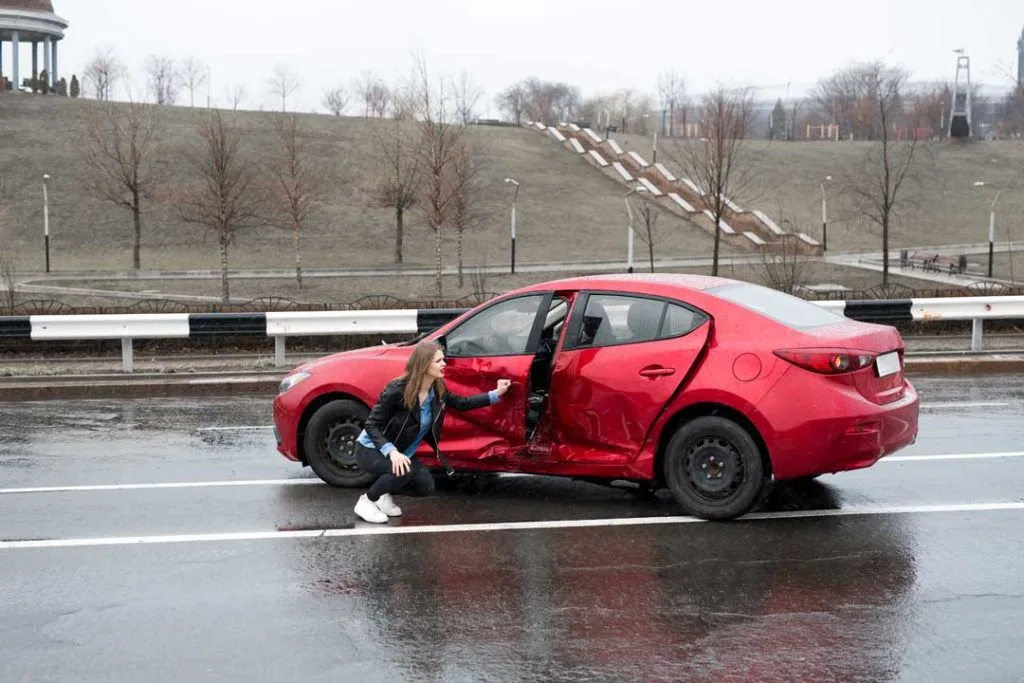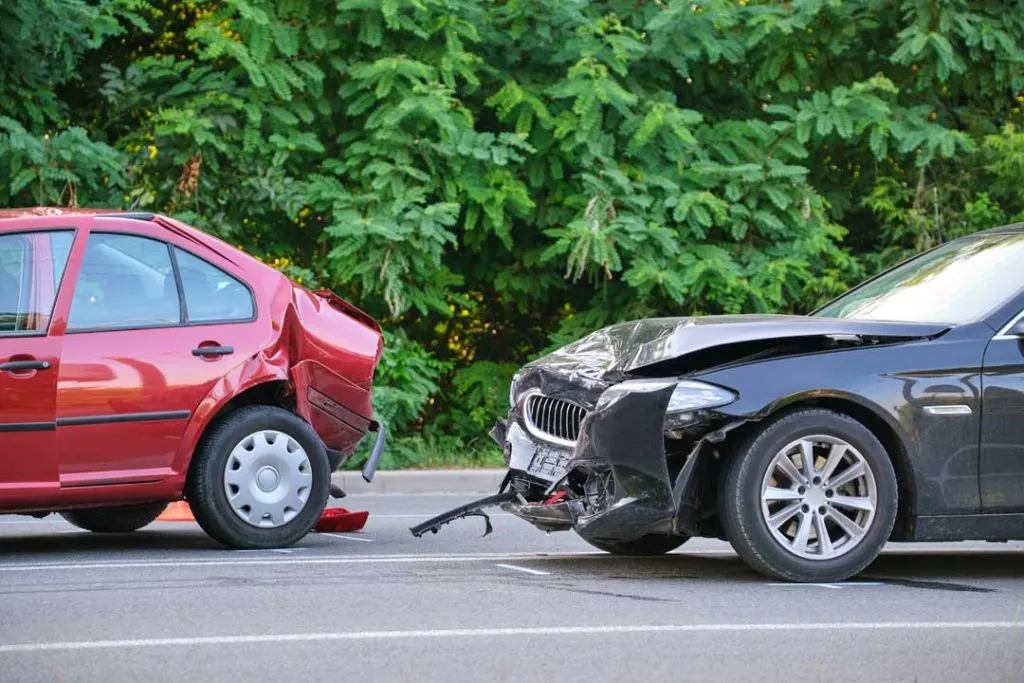When it comes to a Connecticut car accident fault, proving who was responsible can make or break your case. The right legal steps—and timing—can protect your rights and secure the compensation you deserve.

Been in a car accident in Connecticut? Determining fault goes beyond blame assignment because it serves to protect your legal rights and ensure you receive appropriate compensation.
The aftermath of a collision can be chaotic but your recovery begins with understanding Connecticut’s fault system. The 148 fatalities from 137 deadly car accidents this year show that understanding fault determination can save you thousands.
What You’ll Discover Inside:

- Understanding Connecticut’s Fault System
- Types of Evidence That Prove Fault
- Connecticut’s Comparative Negligence Rule
- Common Fault Scenarios in Connecticut
- How a Connecticut Personal Injury Lawyer Can Help
- Timeline for Proving Fault
- Mistakes to Avoid When Establishing Fault
Car accidents are stressful, but in Connecticut, the added task of proving fault can make recovery feel even more overwhelming. As an at-fault state, Connecticut requires drivers to clearly establish who caused the accident before any compensation is awarded.
Whether you’re dealing with medical bills, lost wages, or a totaled vehicle, understanding Connecticut car accident fault rules is essential. This guide breaks down the process—from evidence collection to how a Connecticut personal injury lawyer can support your case.
Understanding Connecticut’s Fault System
The insurance system in Connecticut operates under a “fault” or “at-fault” model. The driver responsible for causing the accident must pay for the damages.
Here’s what this means for you:
- The insurance provider of the driver at fault is responsible for covering your medical expenses and property damage as well as lost wages and pain and suffering.
- To receive compensation for damages you must demonstrate that the other driver caused the accident.
- Your compensation will be reduced if you share some of the responsibility for the accident.
In Connecticut you must show who caused the accident to decide who pays unlike no-fault states where your insurance covers your damages no matter who caused the crash.
Connecticut law requires establishing fault which makes proving responsibility crucial after an accident. Insurance companies have the right to decline your claim or reduce the benefits when there’s no definite proof of who caused the accident.
Types of Evidence That Prove Fault

Determining who caused your accident depends entirely on evidence. Well-documented evidence boosts your ability to demonstrate responsibility and obtain full compensation.
Police Reports
Your case often depends heavily on the police report. When officers respond to an accident, they:
- Document the scene
- Interview drivers and witnesses
- Note any traffic violations
- Sometimes assign fault directly in their report
Contact police officers for every accident no matter how small because their reports can affect insurance and court outcomes. The objective evaluation provided by police reports influences insurance companies and legal proceedings significantly.
Witness Statements
The testimony of independent witnesses has the power to either support or destroy your case. These are witnesses who observed your accident but hold no personal connection to you.
Why are witness statements so powerful? Witness statements gain power because insurance companies and courts perceive them to be objective records of events. A Connecticut personal injury lawyer can assist you in obtaining and recording these vital statements while memories remain fresh.
Photos and Videos
Images can convey powerful evidence for determining liability. The accident scene’s photos and videos reveal details such as vehicle positions and damage patterns.
- Vehicle positions
- Damage patterns
- Road conditions
- Traffic signs/signals
- Skid marks
- Weather conditions

The widespread adoption of smartphones provides individuals with a portable device that serves as a strong tool for evidence collection. Take pictures and record videos with your phone right after an accident to document the scene.
Electronic Data
Today’s vehicles function like computers on wheels because they gather important data that helps determine fault.

- Vehicle speed
- Brake application
- Steering input
- Seatbelt use
The necessary data from serious accidents can be extracted from the vehicle’s Event Data Recorder (EDR) or “black box”.
Connecticut’s Comparative Negligence Rule
Here’s something crucial you need to understand: The state of Connecticut adheres to a “modified comparative negligence” system which prohibits recovery if a party is 51% or more at fault.
What does this mean in plain English?
- You can obtain compensation for damages even when you share some responsibility for the incident.
- Your compensation amount decreases according to your fault percentage.
- When your fault reaches 51% or more you lose the right to collect any damages.
You’ll only receive $70,000 in damages from a $100,000 claim if you share 30% of the accident responsibility.
Common Fault Scenarios in Connecticut
Specific types of accidents bring with them legal assumptions about who is at fault which can either benefit or damage your legal position.

Rear-End Collisions
Most rear-end accidents assign blame to the trailing driver. Legally drivers must keep a safe distance behind other vehicles to avoid collisions.
However, there are exceptions:
- If the front driver suddenly reversed
- The front driver’s brake lights were not operational.
- The trailing driver holds the default responsibility for rear-end accidents except when the front driver stops abruptly without any valid cause.
Left-Turn Accidents
In collisions between left-turning vehicles and oncoming traffic the responsibility typically falls to the driver making the left turn. The responsibility for left-turning vehicles to yield to approaching traffic leads to their usual fault status in turn-related accidents.
Exceptions exist when:
- The oncoming driver was speeding
- The oncoming driver ran a red light
- A protected green arrow was displayed for the left-turning driver.
The 359 Connecticut motor vehicle crash fatalities of 2022 demonstrate the deadly consequences of determining fault in typical accident scenarios.
How a Connecticut Personal Injury Lawyer Can Help
Proving fault isn’t always straightforward. Insurance companies work diligently to reduce their payment obligations by redirecting fault onto you.

Your advocate in Connecticut personal injury cases is a skilled lawyer who will protect your interests.
- Investigating the accident thoroughly
- Gathering all available evidence
- Interviewing witnesses professionally
- Consulting with experts when needed
- Handling aggressive insurance adjusters
Insurance companies employ adjusters and lawyers whose main goal is to minimize your compensation. When you hire your own legal representative you can achieve equal footing.
Timeline for Proving Fault

Time matters tremendously when proving fault. Here’s a typical timeline:
- Immediate aftermath (0-24 hours):
- Document the scene
- Get witness contact information
- File a police report
- Seek medical attention
- First week:
- Notify insurance companies
- Begin collecting medical records
- Consult with an attorney
Most car accident claims in Connecticut must be filed within two years according to state law. Your legal right to pursue damages expires permanently after two years from your accident date if you do not file a lawsuit.
Mistakes to Avoid When Establishing Fault
Some mistakes may severely harm your ability to establish fault in a legal setting.

Admitting Fault at the Scene
After an accident avoid making any apologies or acknowledgments of fault regardless of your perceived responsibility. Insurance companies can exploit your polite responses to your disadvantage in accident claims.
Delaying Medical Treatment
The delay in seeking medical treatment after an accident leads people to believe that the injuries were not severe or unrelated to the crash. Always seek medical attention promptly.
Giving Recorded Statements Without Legal Advice
Insurance adjusters receive training to ask questions that can trick you into accepting partial fault. Consult your lawyer before providing any recorded statements.
A Practical Guide to Connecticut Car Accident Fault and What to Do Next
Establishing liability in Connecticut car accidents demands knowledge of the state’s fault system along with gathering substantial evidence and understanding comparative negligence rules.
The practical understanding of these principles becomes essential protection for your rights because Connecticut has already experienced 14 substance-related crashes this year while national motor vehicle traffic fatalities decreased 3.6% from 42,514 to 40,990 since 2022.
Remember these key points:
- Connecticut is an at-fault state
- Evidence collection should begin immediately
- In modified comparative negligence systems your financial compensation relies directly on the established percentages of fault.
- Professional legal help significantly improves your chances

Taking appropriate measures after an accident while comprehending Connecticut’s fault rules allows you to secure the best possible result through a difficult period.

Jessi is the creative mind behind The Coffee Mom, a popular blog that combines parenting advice, travel tips, and a love for all things Disney. As a trusted Disney influencer and passionate storyteller, Jessi’s authentic insights and relatable content resonate with readers worldwide.
